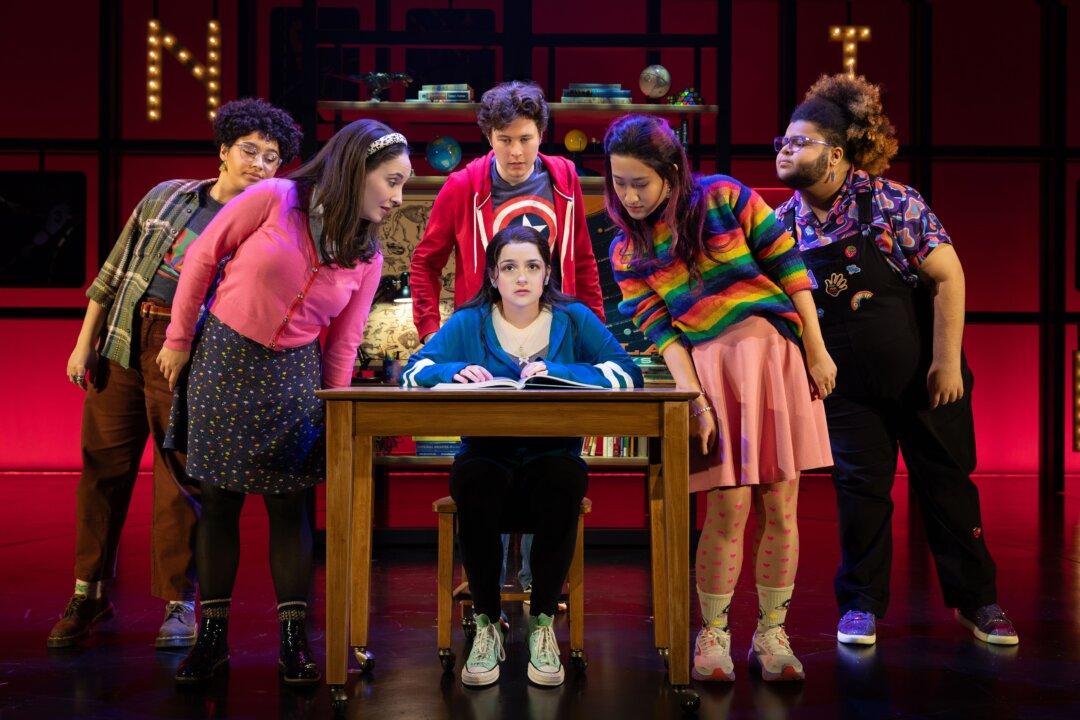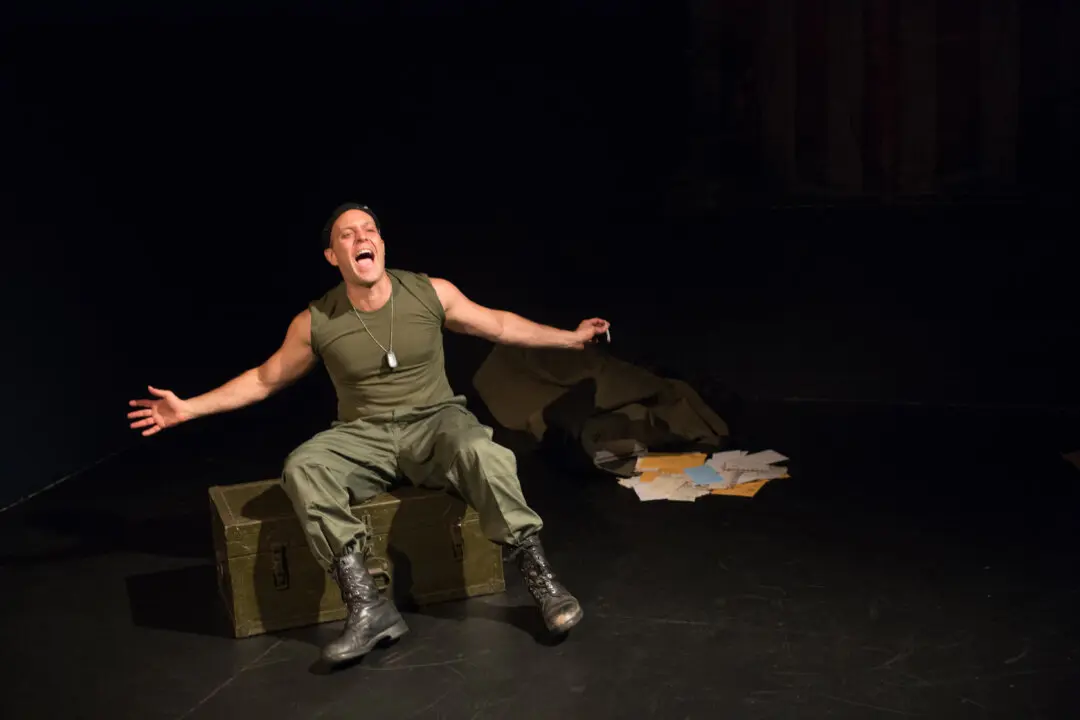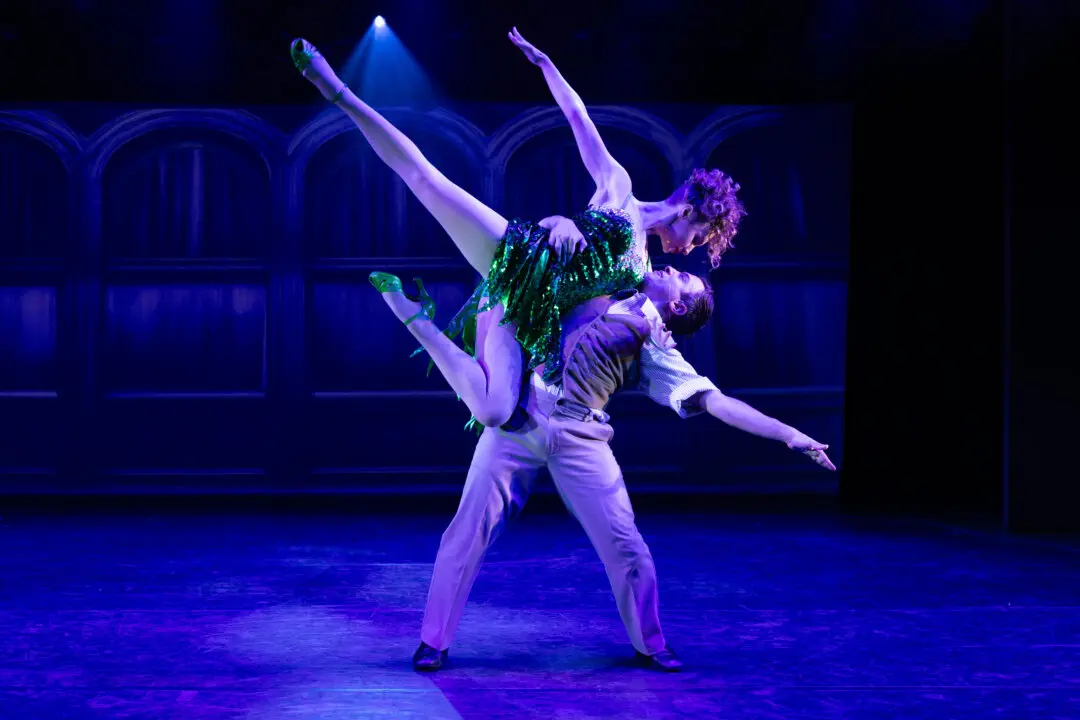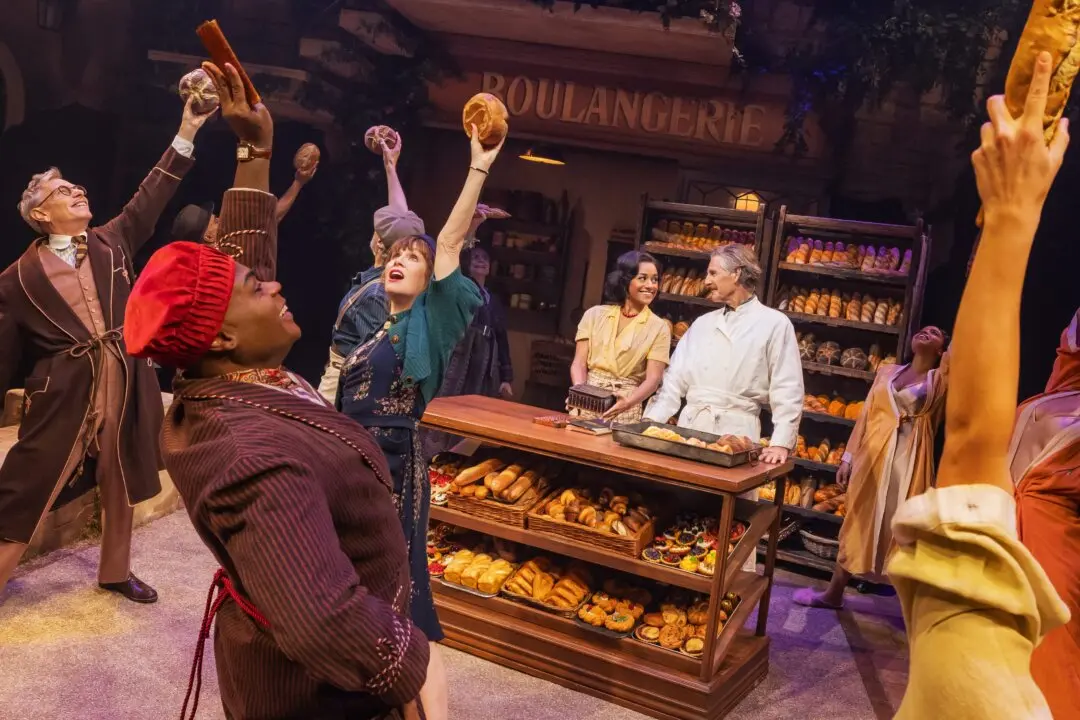NEW YORK—There is a saying that “if you’ve met one autistic person, you’ve met one autistic person.“ This line, spoken at the beginning of the very enjoyable new Broadway musical ”How to Dance in Ohio,” invites the audience to cast aside any preconceptions they might have and see this story’s central characters as distinct individuals.
Taking place in present day Ohio, and based on the award-winning documentary film of the same name, the stage musical, with book and lyrics by Rebekah Greer Melocik and music by Jacob Yandura, focuses on seven autistic people on the cusp of adulthood. The audience gets to see them separately and when they get together for group therapy at Amigo Family Counseling. The recently divorced Dr. Amigo (Caesar Samayoa) runs the sessions with the aid of his adult daughter Ashley (Marina Jansen), a professional dancer recovering from a severe injury. The Amigo’s relationship is somewhat strained when it comes to the question of Ashley’s future career path.
The seven group members are Marideth (Madison Kopec), a newcomer who doesn’t like to be touched; Drew (Liam Pearce), a young man with a knack for electrical engineering and who prefers circuits to personal interactions; Tommy (Conor Tague), who won’t wear collared shirts and is intent on getting his driver’s license; Jessica and Caroline (Ashley Wool, Ayanna Nichole Thomas), inseparable pals since childhood, though their relationship is tested when one gets a boyfriend; Remy (Desmond Luis Edwards), who wants to become an internet personality, but can’t handle negative comments; and Mel (Imani Russell), the oldest of the group, who has issues regarding her workplace environment.
As the show progresses, we see each of these people attempt to step out of their comfort zones and prove to themselves, as well as their loved ones and the world at large, that they are ready for whatever life decides to throw at them. To that end, Dr. Amigo proposes a semi-formal dance for the group members as a sort of rite of passage. However, as word of the dance gets out and the press start requesting interviews, certain well-meaning comments are taken out of context and wind up on social media. This results in a backlash which threatens to destroy all the positive steps members taken up to that point.
“How to Dance in Ohio” is a rare work that connects with the audience on just about every level. Most importantly, especially for a musical with a message, it never talks down to the audience or repeatedly hits them over the head with what it wants to say when it comes to autism.
It helps immeasurably that each of the seven autistic characters are portrayed by individuals who themselves have autism. This increases the connection the actors have to their characters, and that the audience has to the story. The entire cast delivers strong performances throughout.
Just as critical, the show’s creators took pains to not portray any of the characters’ parents as one-dimensional. Instead, they are portrayed as people who don’t have all the answers. As they attempt to deal with autism from the outside looking in, they work through personal struggles of their own and worry what will happen to their children when they are no longer around to take care of them. This point is explored in the well-constructed song “The How-To’s.”
As we begin to see the connections that form between the group members, and what happens when romantic feelings enter the mix, one finds oneself cheering on these seven souls and their attempts to embrace new situations and possibilities—ones which become increasingly tangible as they experience emotions ranging from fear and trepidation to hope and excitement as matters move toward their conclusion.
Sammi Cannold’s direction works perfectly here, with nothing feeling forced or clichéd. The music, while not hummable, easily fits into the story, hitting all the right notes. Highlights include the rousing “Today Is,” which shows the different routines and travails the group members go through each morning; the romantically tinged “Waves and Wires;” and the powerful “Building Momentum;” which illustrates how, if one is willing to take a chance and determined to follow it though, just about anything is possible. Credit also must go to Mayte Natalio’s excellent choreography and Robert Brill’s deliberately disjointed set.
There are a few problems here and there. The sound design is off more than once, occasionally making it hard to hear the lyrics, especially early on. The orchestrations are over-milked at times. Though these are minor quibbles in an mostly otherwise flawless production.
“How to Dance in Ohio” is one of the most uplifting works to reach Broadway in a long time, with a final 20 minutes that simply soars in its execution. This is one show that will definitely leave you smiling.
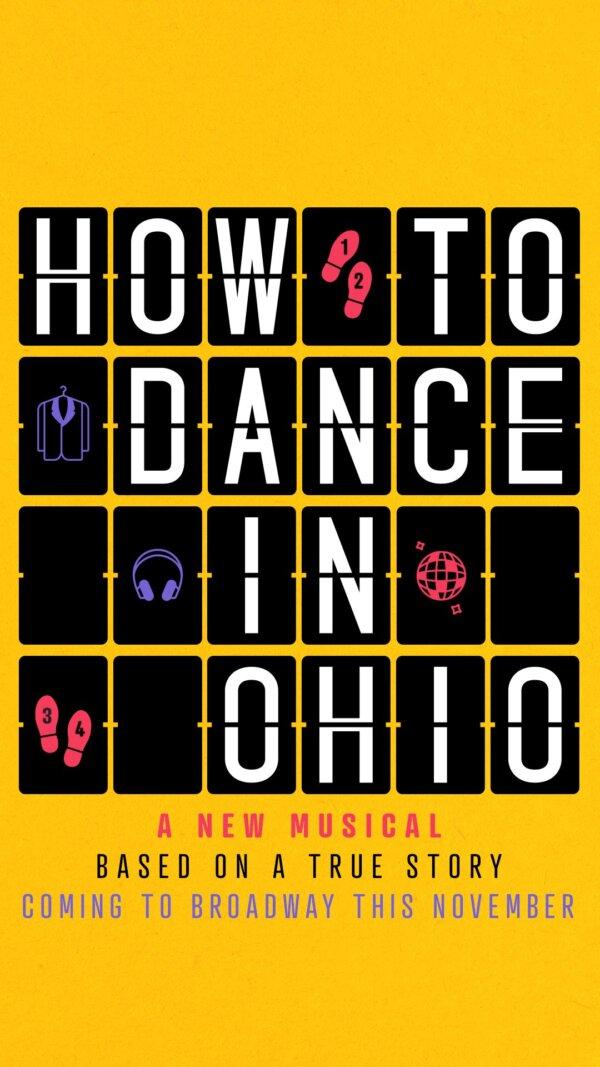
'How to Dance in Ohio,' a 2024 musical directed by Sammi Cannold.

